These are the Venture Challenge Winter teams 2024-2025!
Six teams have started the First Venture Challenge Winter edition 2024-2025! These starting life sciences entrepreneurs will learn everything about building and pitching a business plan. By participating in the Venture Challenge, the teams will get a huge boost to take their idea to the next level. Not only will they receive one-on-one coaching, but they will also get the chance to pitch to investors and get in touch with seasoned entrepreneurs. Meet the six teams below!
NeuroTidal Diagnostics: Aiming for a breakthrough in the diagnosis of neurodegeneration.
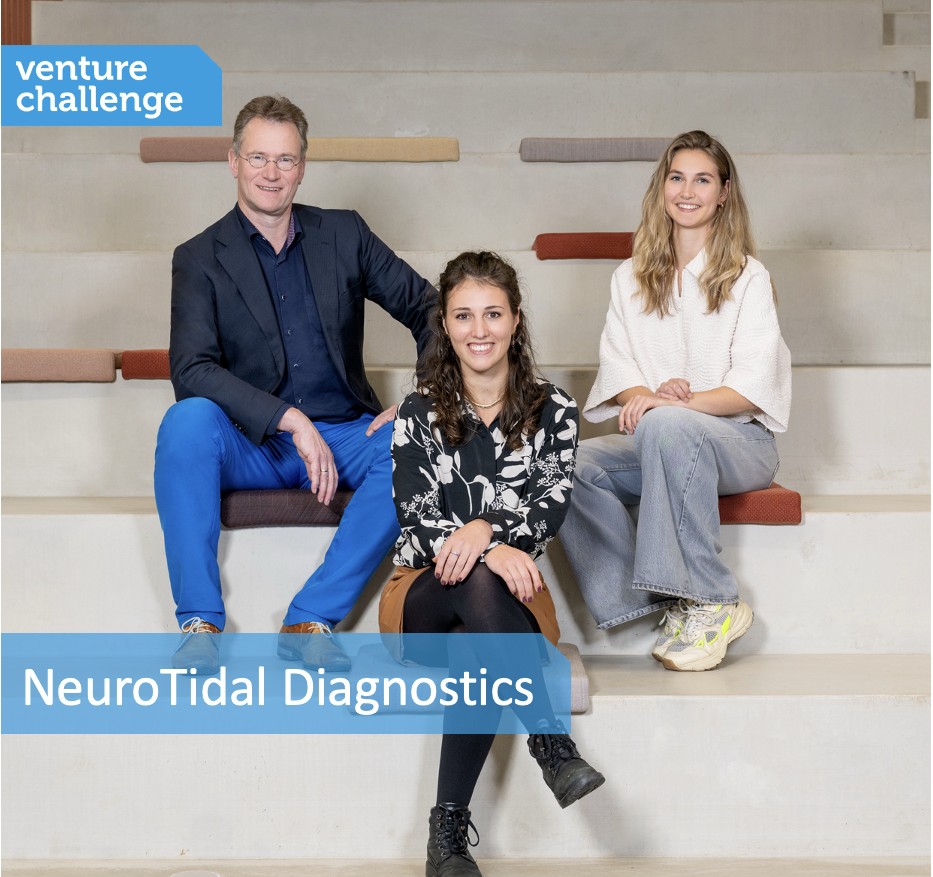 From left to right: Stefan Rudiger, Francoise Dekker and Pleun van Veghel
From left to right: Stefan Rudiger, Francoise Dekker and Pleun van Veghel
Neurodegenerative diseases are affecting 55 million people world-wide and are expected to grow even further. These diseases include Alzheimer's disease, Parkinson's disease, and Huntington’s disease. Upcoming therapies require early diagnosis and non-invasive monitoring to improve cost-effectiveness and accessibility for large populations. NeuroTidal Diagnostics provides a new diagnostic approach for neurodegenerative diseases. We have developed FibrilPaint, a novel diagnostic tool capable of detecting and characterising key agents in multiple neurodegenerative diseases with high accuracy and efficiency in body fluids. It is unique for FibrilPaint to assess the presence and size of various amyloid fibrils. The ability of FibrilPaint to detect all fibrils makes it suitable for early screening. Our fibril paint assay is complementary to existing diagnostic assays. Applications include monitoring of treatment of Alzheimer's disease and other neuropathies, assessment of patient progression during clinical trials, detection of disease at an early stage, and clearance checks of blood samples as amyloid-free.
CellEKT: Measuring kinase selectivity where it really matters
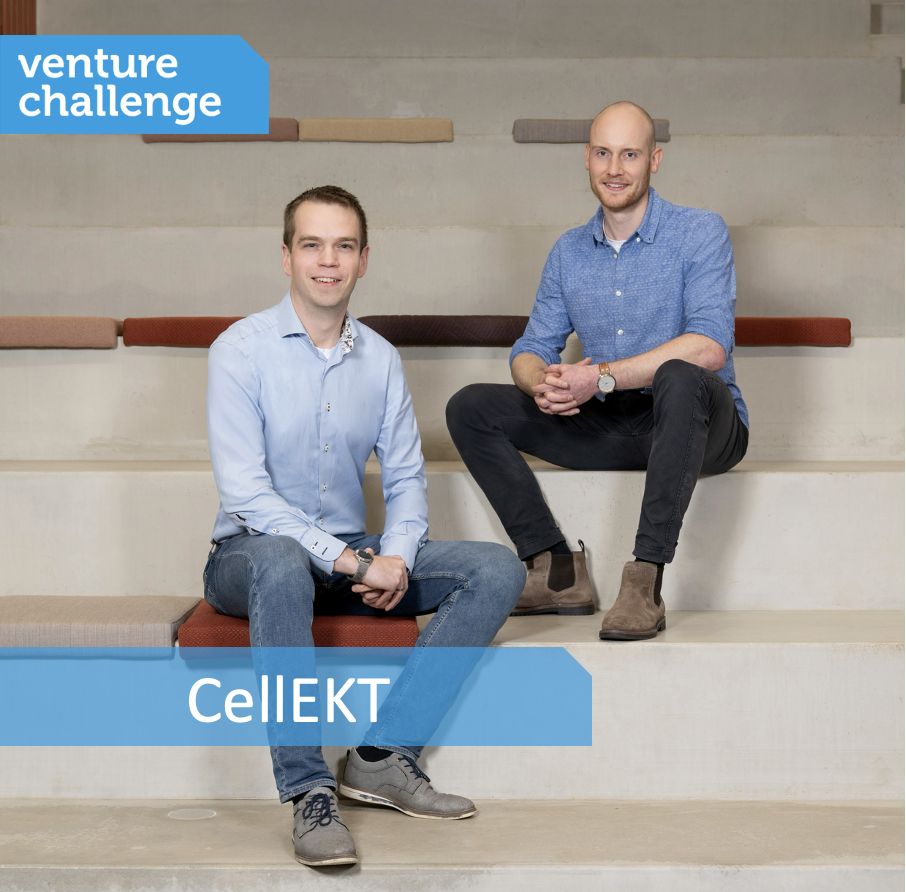
From left to right: Anthe and Joel
The human genome encodes for 518 protein kinases, together called the kinome. These proteins are pivotal in the cellular regulation of biological processes at the core of many therapeutic areas, among which cancer and autoimmune disorders. Due to the critical role of kinases, the discovery of kinase inhibitors is a major focus of both academic and industrial research and is reflected by the 80 FDA-approved kinase inhibitors as of writing. Despite the amount of FDA-approved kinase inhibitors, around 60% of inhibitors fail in phase I to approval due to toxicity and efficacy reasons. It is crucial to thoroughly examine the interaction between kinase inhibitors and their targets to understand their mode of action and potential toxicity concerns. To prevent unforeseen side effects of kinase drug candidates, efficient methods for determining target engagement across the cellular kinome are necessary. We have developed CellEKT, a chemical proteomics platform for investigating cellular target engagement of endogenously expressed kinases using a library of chemical probes. CellEKT has the ability to guide the discovery and therapeutic development of drugs.
Capsule Photonics - a pill-sized capsule endoscope for the early detection of oesophageal cancer diagnosis.
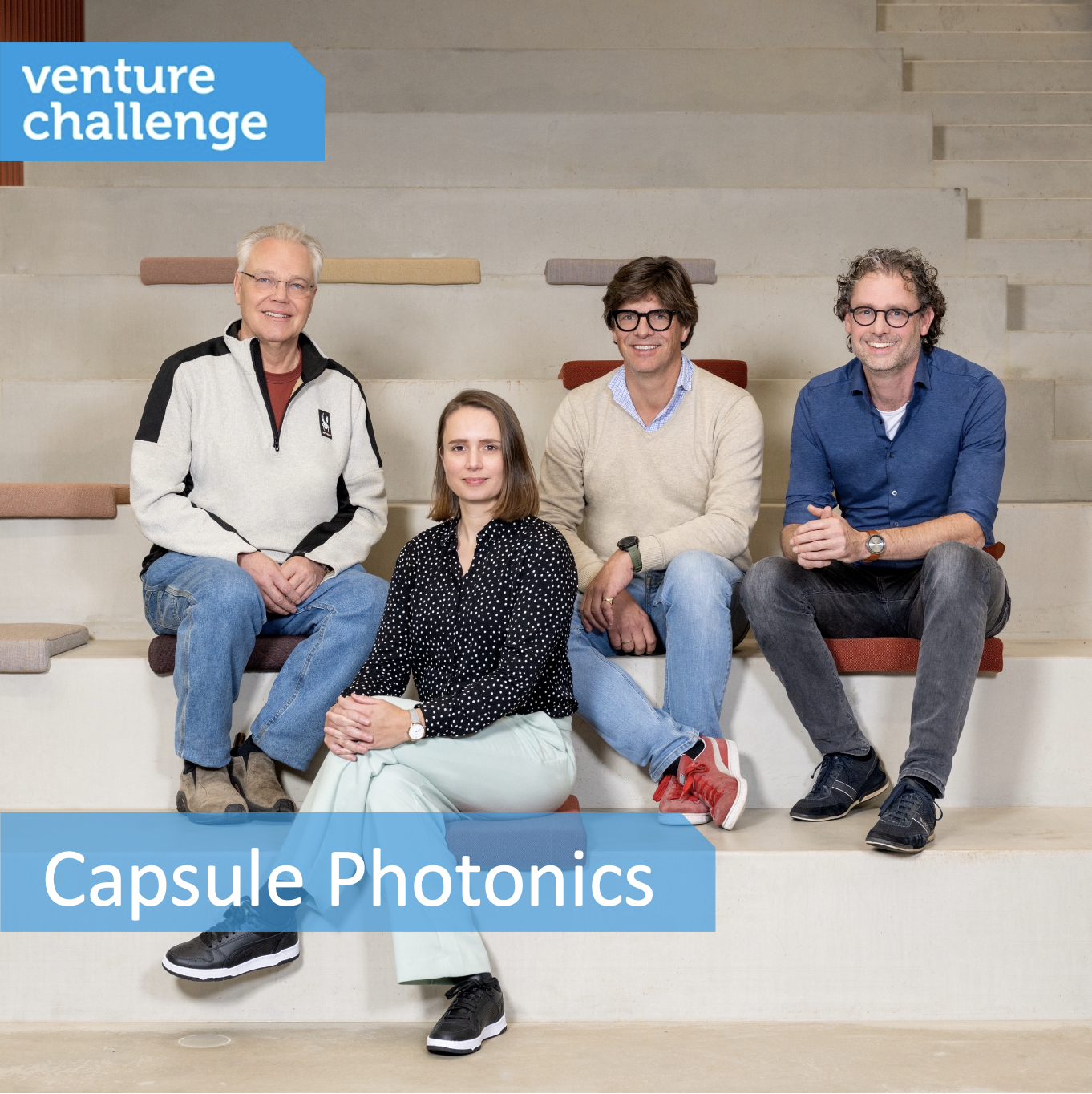
From left to right: Johannes, Anouk, Ties and Wouter
Early detection dramatically improves survival rates. Screening with conventional endoscopy is offered to people with Barrett’s oesophagus, a disease linked to a higher oesophageal cancer risk (specifically oesophageal adenocarcinoma). For a conventional endoscopy, patients are sedated and a clinician and two nurses perform the procedure in 30 minutes. The patient then has to stay in the hospital for a few hours to recover from sedation. Conventional endoscopy is labour-intensive, expensive and misses 25% of early cancer. It is, therefore, even questioned if the benefits outweigh the costs. We created the LightUp, a pill-sized camera with advanced imaging techniques that can be swallowed by a patient without sedation. A procedure with LightUp can be performed by a single nurse, in a matter of minutes. LightUp will also detect at least 27% more early cancer than conventional endoscopy. Screening with LightUp will thus reduce man-hours and costs, while improving patient outcomes.
Gemini Theranostics - Diagnosis and Treatment of Ovarian Cancer through Targeting the Follicle Stimulating Hormone Receptor
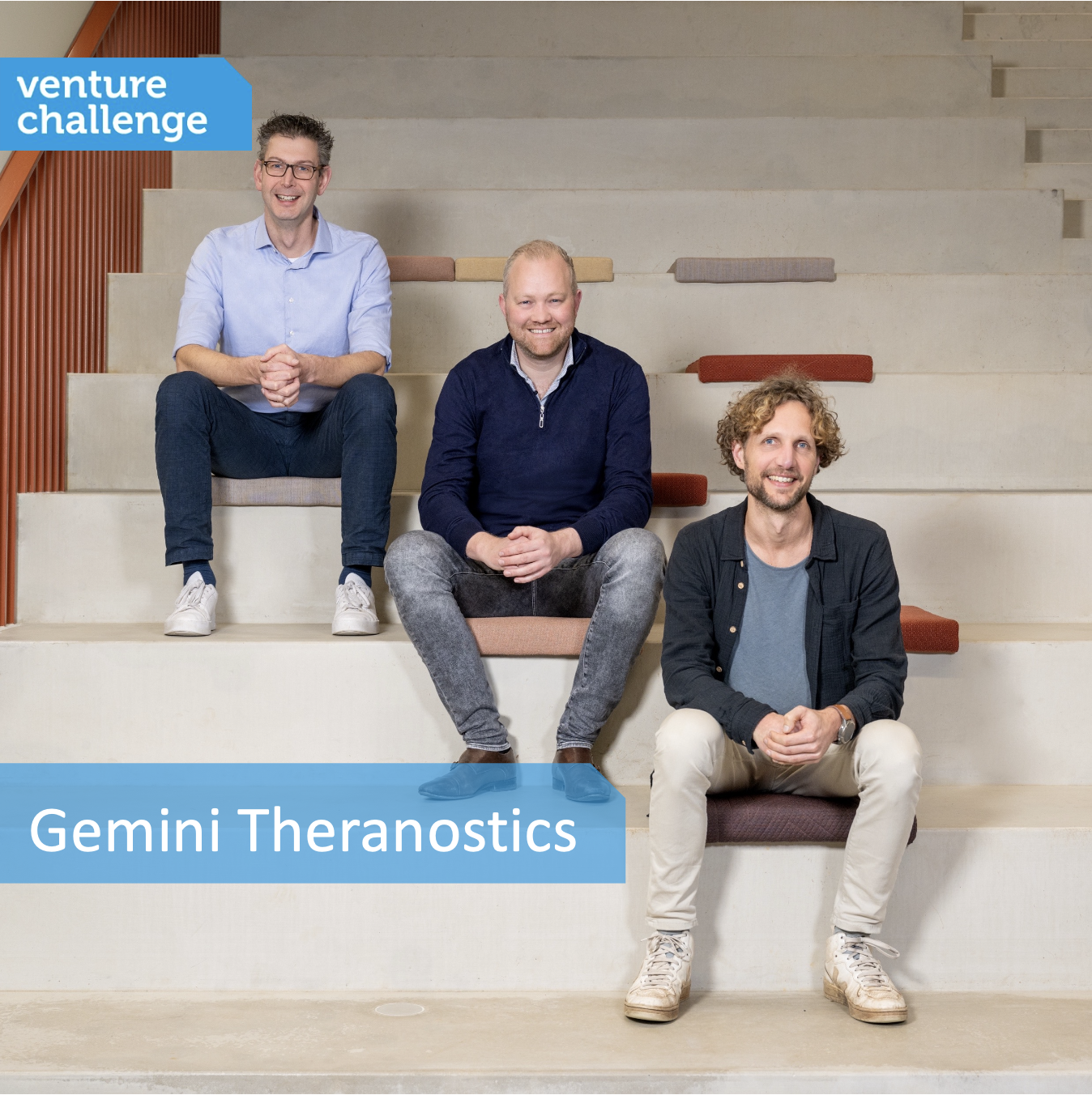
Women diagnosed with ovarian cancer have a poor five-year survival of less than 38%, which barely improved in the past decades. Treatments mainly rely on surgery and traditional chemotherapies, but personalized diagnosis and targeted therapy is lacking for ovarian cancer. For ovarian cancers, we discovered that growth is often highly dependent on hormone receptors, which we confirmed by demonstrating receptor expression on resected tissue. We developed a new nuclear theranostic, a radioactive drug that selectively targets the tumor by binding to the overexpressed receptors, allowing targeted diagnosis and personalized therapy. Nuclear theranostics in general have been ground-breaking for e.g. prostate cancer with a labelled drug called PSMA. Our new nuclear theranostic is based on the drugs originally investigated for fertility research. With a large potential patient population, a nuclear theranostic to treat ovarian cancer is ground-breaking.
oncoChem - Novel FAP inhibitors for imaging and treatment of cancer
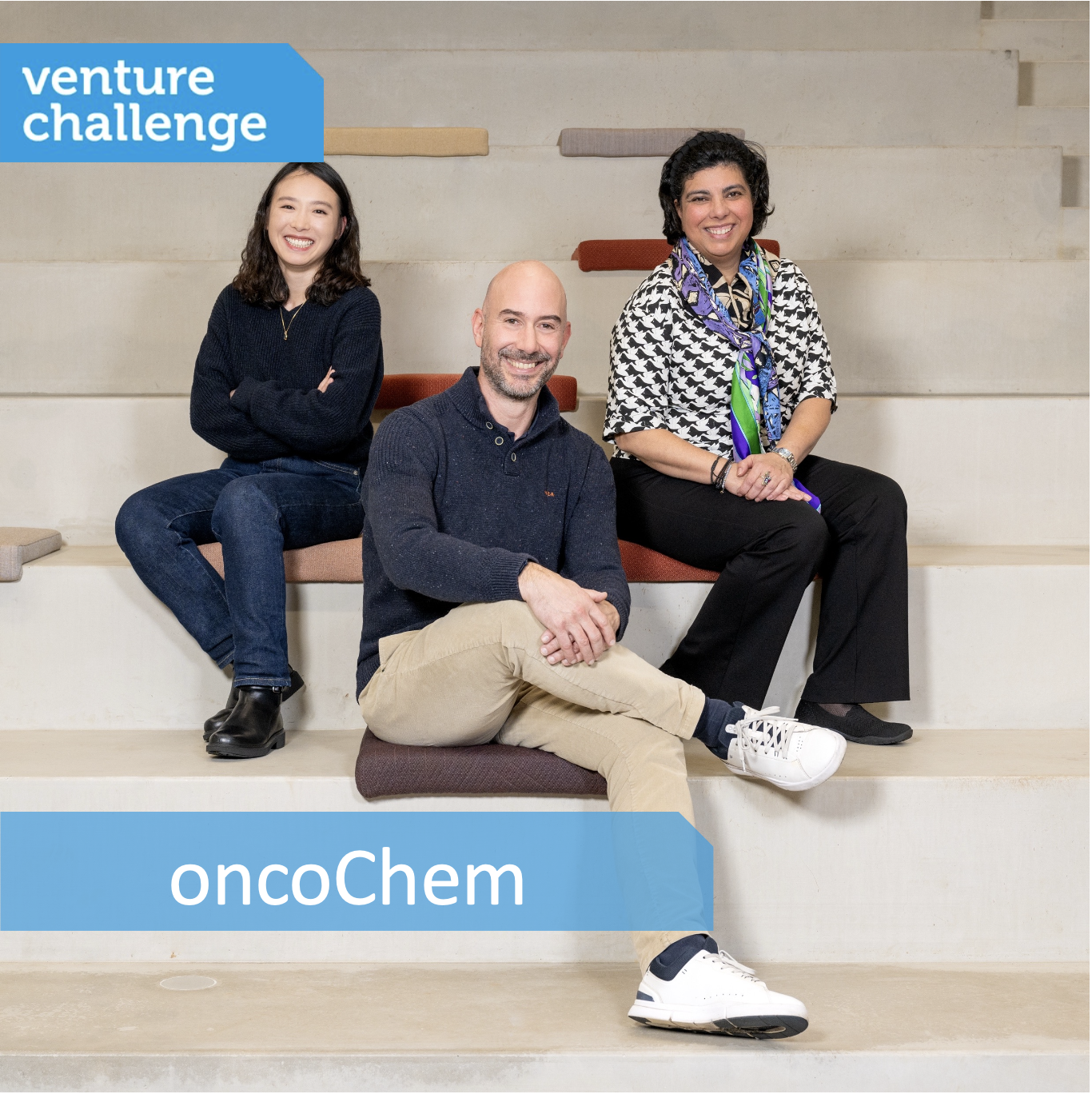
Based on a novel family of compounds developed at Erasmus MC, our venture will translate these into imaging probes that can be used to see malignant tumours during diagnosis and surgery, and into therapeutics for the treatment of cancer. We have developed a library of inhibitors (approx. 50 compounds named eFAP) against fibroblast activation protein (FAP), a protein almost universally present in solid tumours. By substituting these eFAP compounds with various payloads, such as radionuclides, fluorophores and cytotoxic drugs, they can be used at all stages of cancer patient management. For example, one of our variants can be labeled with fluorine-18, allowing diagnosis of cancer via positron emission tomography (PET); while other compounds were specifically designed to complex radionuclides, such as 90Y, 177Lu and 225Ac for therapeutic applications. Our most advanced candidate, eFAP-24, an imaging probe equipped with the near-infrared (NIRF) dye will shortly be entering into a phase I/IIa clinical study to evaluate its use for intraoperative guidance of pancreatic cancer surgery.
Modular Therapeutics

Our understanding of genes and their targeting for pharmacological intervention has traditionally followed a uniform, monolithic model of protein production. However, our research challenges this perception by presenting a biological model where canonical gene transcripts and the resulting proteins represent just a fraction of the transcriptome's true diversity. This study unveils 'RNA dicing,' an mRNA metabolic process in which numerous genes undergo additional cleavage, creating truncated mRNA sub-templates that translate into specific protein domains with distinct biological functions. Shifting from a monolithic to a modular model of protein expression fundamentally transforms our understanding of targeted biological therapy. Focusing on JAK1, we illustrate how RNA dicing governs its dual role as both a tumor suppressor and an oncogene, significantly influencing cancer dynamics. We identify a critical nonsense mutation in this gene that impacts its tumor-suppressor variant and concurrently augments its oncogenic diced isoform. This insight guides the precise treatment with specific inhibitors for the subset of patients carrying this mutation, formerly deemed to have lost complete function.
